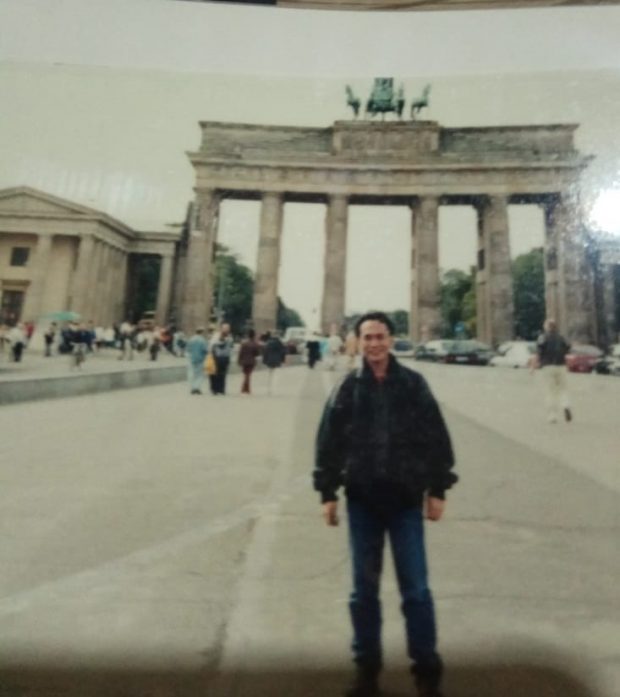
Wind of Change

By Eddy Suprapto
Contributor to AsiaN
JAKARTA: Today, October 3, 1990 is a historic record for the German people, namely the reunification of Germany or German Reunification. The process of unification took place when the German Democratic Republic (East Germany) was incorporated into the Federal Republic of Germany (West Germany), especially after East Germany’s first free elections on March 18, 1990. Negotiations between East Germany and West Germany concluded in a single agreement that affirms full sovereignty to the unitary German state.
The united German state is member of the European Community (later the European Union) and NATO. The term “Reunification” is used differently from the initial unification of the German state in 1871. Although usually referred to by the term “Reunification”, it is actually a “reunification” of the German state into one larger entity, which did not exist before.
If we go back to history, after the end of World War II in Europe, the German State was divided into four occupation zones. The old capital Berlin, as the center of the Allied Army Control Council itself, was divided into four zones.
Although the original intention of the occupation was to escort Germany together from 1947, the arrival of the Cold War caused France, Great Britain and the United States to merge their zones into the Federal Republic of Germany (and West Berlin) in 1949, excluding the zone of the Soviet Union which then became the German Democratic Republic (including East Berlin) that same year.
In addition, parallel to the terms of the Yalta Conference in February 1945, the eastern regions of Pomerania and Silesia, as well as the southern half of East Prussia, were awarded to Poland and the northern half of East Prussia (now known as the Kaliningrad Oblast) was awarded to the Soviet Union.
From 1949 on, the Federal Republic of Germany was built into a western capitalist country with a “social market economy” and a democratic parliamentary government. Prolonged economic growth began in 1950 and produced a 30-year “economic miracle” (Wirtschaftswunder).
The German Democratic Republic established an authoritarian government in a style imitating the economy of the Soviet Union. Although East Germany was the richest and most developed country in the Eastern Bloc, many of its citizens still looked to the West for political freedom and economic prosperity.
The flight of East Germans to the non-communist country via West Berlin caused East Germany to establish a strict border guard system (of which the Berlin Wall was a part) in 1961 to prevent this mass flight.
The Separation Wall
The Berlin Wall (German: Berliner Mauer) is a concrete parapet built by the German Democratic Republic (East Germany) that separates West Berlin and East Berlin and other areas of East Germany, making West Berlin an enclave.
This dividing wall, built on August 13, 1961, was accompanied by the construction of a guard tower built along this wall, as well as the construction of a restricted area, which is filled with anti-vehicle mines.
The Eastern Bloc stated that this wall was built to protect its citizens from fascist elements that could trigger major movements so that they could form a communist government in East Germany. Even so, in practice, prior to the construction of this wall, there were about 3.5 million East German citizens who migrated and defected to the West, sometimes by crossing the borders of East Germany and West Germany, and then go to other Western European countries. Between 1961 and 1989 this wall prevented this.
In the span of approximately 30 years, there were about 5,000 people who tried to escape, with an estimated 100 to 200 people who died after being shot. In fact, this wall was used to prevent the greater flight of the East Berlin population to the West Berlin area, which is within West German territory.
21st Century Humanitarian Agenda
Although the important lesson of the 20th century is the reunification between West and East Germany, the world community is challenged to carry out humanitarian work, namely the reunification of Korea. If in the case of East Germany, it started from the collapse of the East German ally, namely the Soviet Union, the mass activation also wanted a change in a united Germany.
Peace initiatives should also be tried through the people-to-people forum model. For example, on Chuseok Day there was an initiative to bring together families who were separated from North and South Korea. The cultural approach was tried with music concerts, joint film making.
Another thing is the exchange of sports, namely holding Korean unification games carried out in South Korea and North Korea. Diplomacy through sport needs to be tried.
For the 21st century of reunification, the two countries must break the ice of conservative diplomacy by finding new ways of diplomacy out of the box and emphasizing humanity and a united Korea.
I believe the dawn of a united Korea will come, promoted by peaceful journalism.


